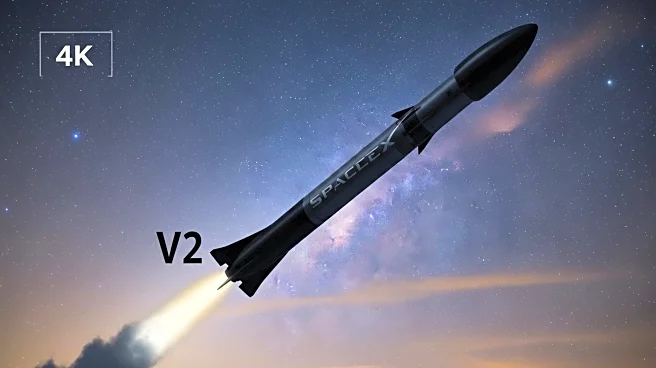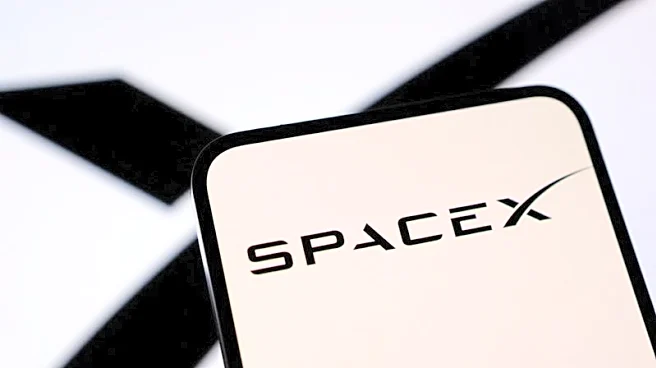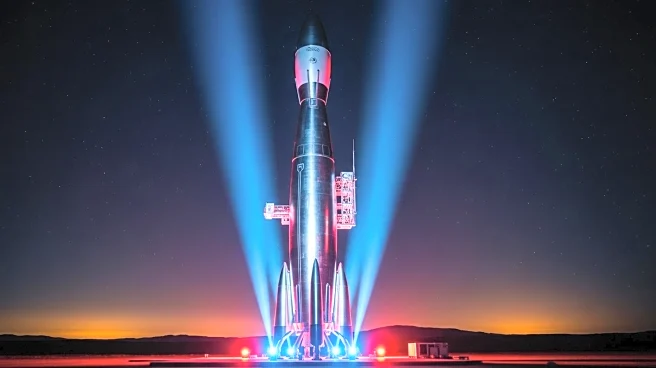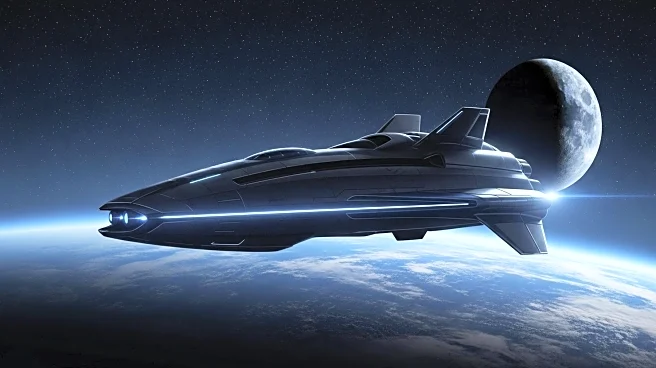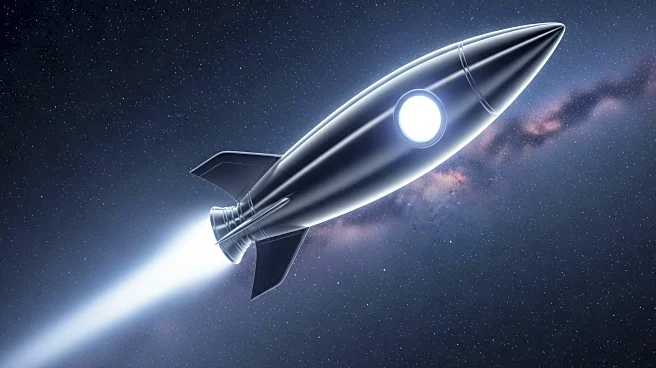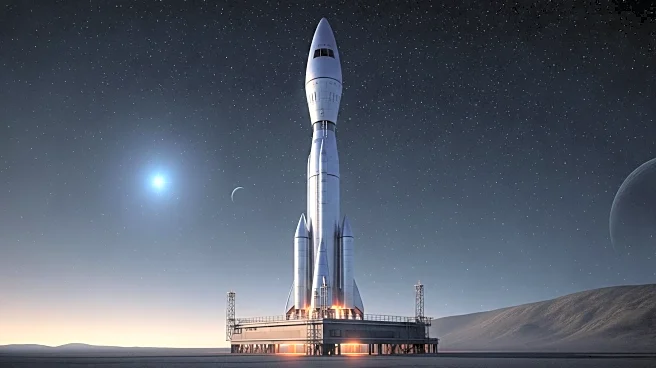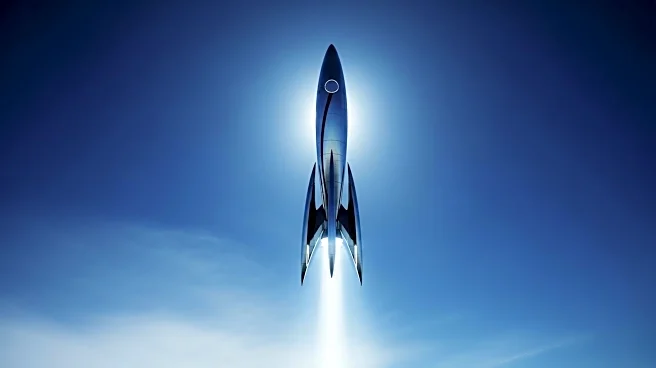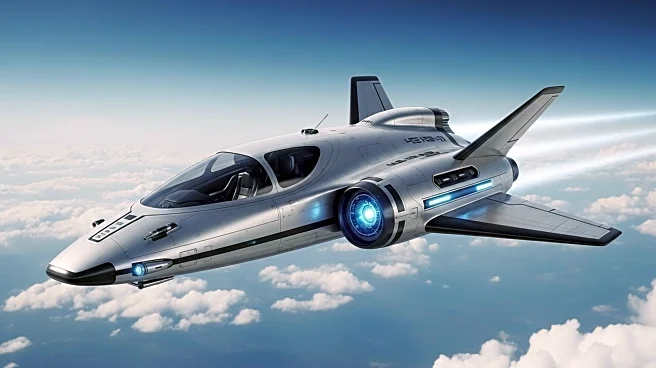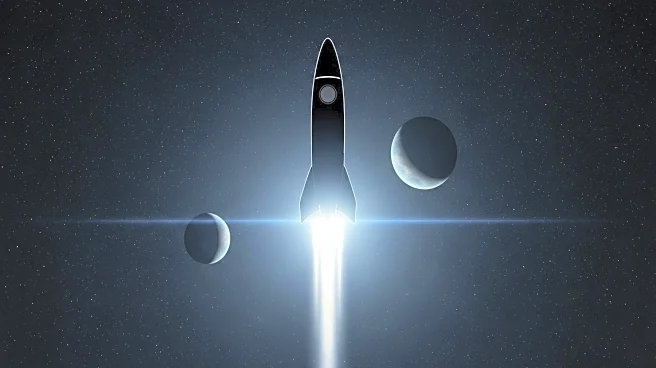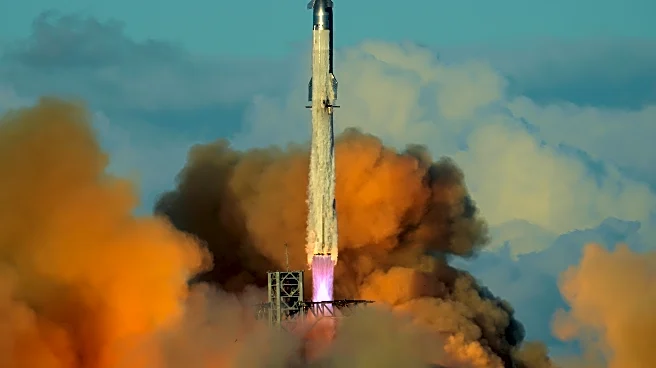What's Happening?
SpaceX has successfully completed the final test flight of its Starship V2 configuration, marking a significant milestone in its space exploration program. The nearly 400-foot-tall rocket launched from Starbase, Texas, and achieved all key goals set for the mission. The Super Heavy booster, reused from a previous test, executed a new landing-burn profile, culminating in a planned splashdown in the Gulf of Mexico. The upper stage of Starship deployed eight mock Starlink satellite simulators and trialed a dynamic banking maneuver for future return-to-pad attempts. This test marks the transition to the next phase, involving the upgraded V3 prototype, which is designed for in-orbit docking and propellant-transfer demonstrations. These capabilities are crucial for missions aimed at reaching the moon and Mars. SpaceX is also enhancing its launch infrastructure, including upgrades at Starbase and new launch pads in Florida.
Why It's Important?
The successful completion of the Starship V2 era is a pivotal step for SpaceX as it advances towards more ambitious space missions. The V3 prototype will enable more complex operations, such as orbital docking and propellant transfer, essential for lunar and Martian exploration. This development aligns with NASA's Artemis campaign, which aims to land humans on the Moon's south pole. SpaceX's progress is crucial for deploying higher-capacity Starlink satellites, enhancing global internet coverage. The advancements in rocket technology and infrastructure underscore SpaceX's role in shaping the future of space travel and exploration, potentially benefiting scientific research, commercial ventures, and international collaborations.
What's Next?
SpaceX is set to begin testing the V3 prototype, which includes structural changes and upgrades to the Raptor engine for increased lifting capacity. The company plans to conduct the first Starship orbital flights and operational payload missions with this new iteration. Additionally, SpaceX is working on building dual Starship launch pads in Florida, which will support future missions. The success of these initiatives will be critical for meeting the timeline of NASA's Artemis 3 crewed mission, scheduled for 2027. SpaceX must demonstrate complex milestones, including orbital docking and in-orbit propellant transfer, to achieve these goals.
